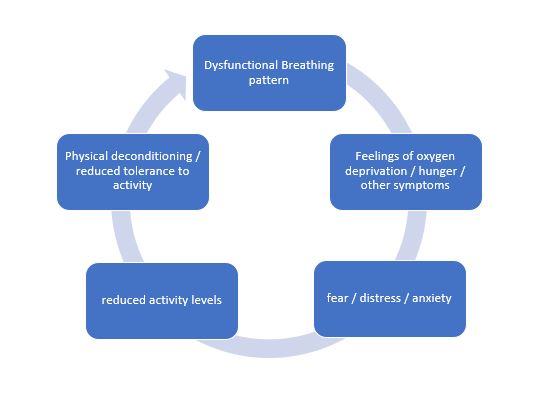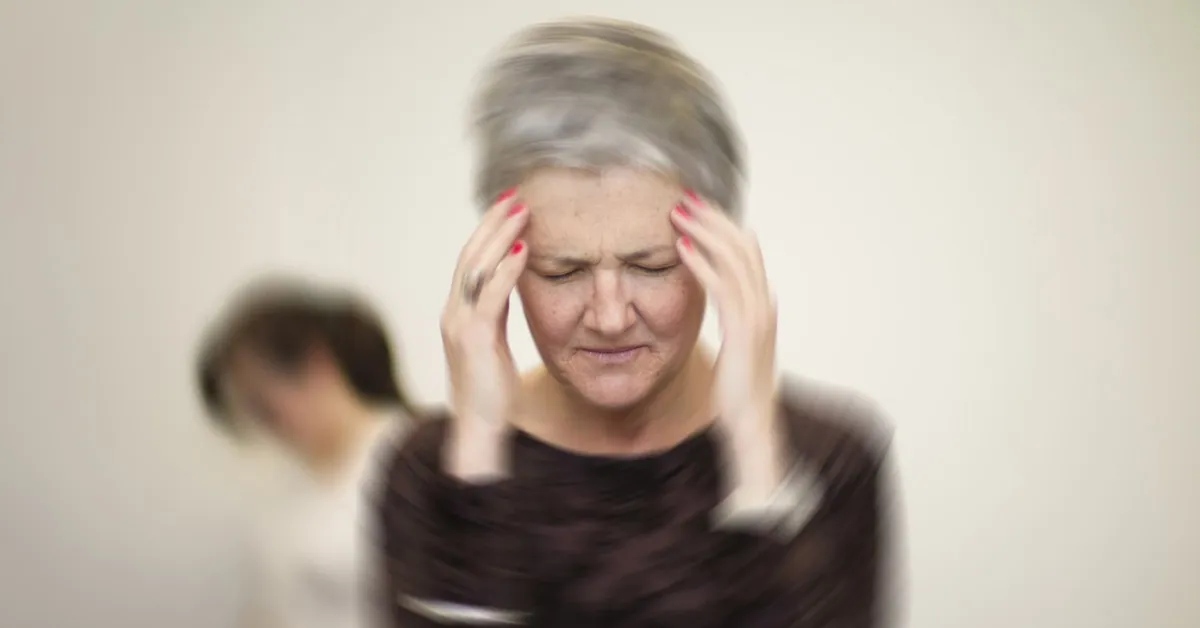Breathing Pattern Disorder (BPD) is also sometimes known as chronic hyperventilation. It is a condition where the sufferer is breathing too quickly, which can cause a chemical imbalance due to a lowering of carbon dioxide. This loss of carbon dioxide causes frightening symptoms which can trigger anxiety and worry leading to a continuation of over breathing. The problem leads to significant breathlessness and loss of normal function, and deconditioning.
Over breathing is a normal reaction to stressful stimuli, but once the stressful situation has passed your breathing should return to normal. If there is a prolonged stress or may be a repeated trigger this continual pattern then becomes your new normal and your breathing does not return to how it should be and a chronic cycle begins. But rehabilitation is possible and effective physiotherapy for BPD is available at Physis Physiotherapy clinics in Edinburgh
What starts BPD?
There are a number of common triggers of BPD. Many patients have multiple triggers, but a single trigger may be enough to start the process.
- Respiratory Infection
- Respiratory Disease – Asthma
- Covid
- Illness
- Trauma/Physical Pain
- Bereavement
- Stress/Anxiety responses
- Sinus problems
- Pregnancy

Surely breathing is natural and we can’t get it wrong!
You may think it is the most natural thing in the world but having a breathing pattern disorder means we could be breathing in a way that uses the wrong muscles to breathe at rest, using the wrong area, taking the air in the wrong way or simply breathing too fast or too deep. All are common faults which can be identified on assessment.
What are the symptoms of BPD?
This altered patterning can be very distressing and leave us feeling like we cant get enough air, which will lead to anxiety if you didn’t already have it. If you are not getting enough oxygen, you and breathing rapidly (hyperventilation), you can experience all sorts of other symptoms.
Common Symptoms of hyperventilation
- Feeling breathless after only slight exertion or minimal exercise
- Feelings of ‘air hunger’
- Feeling breathless when talking and/or eating
- Frequent sighing and yawning
- Palpitations
- Pins and needles in your hands or arms or around your mouth
- Light headedness/ dizziness
- Feeling bloated
- Throat symptoms
- Aching and tightness in the muscles around the jaw, neck and shoulders
- Feeling permanently exhausted and unable to concentrate for no apparent reason
- Dry Cough or constant throat clearing
- Chest discomfort
Again, these symptoms do not suggest there is something terribly wrong. If you have seen your Doctor and there is no sign of any serious condition, they can simply be as a result of your changed breathing pattern. Even if you do have a diagnosed respiratory condition, ensuring that you breathe in the most efficient way can make breathing less of an effort.
How is BPD assessed?
We will take a full history of your problem, its symptoms and how it is affecting you. This will include a full medical history, a questionnaire to identify your symptoms and their severity as well as a physical assessment of your breathing pattern and musculoskeletal function in the area. Some of the symptoms are also those we sometimes see in other cardiovascular and respiratory diseases, so it may be necessary to get your GP to make sure the problems are not from other medical conditions, but once we identify BPD we can start your physiotherapy rehabilitation program.
How do you treat BPD?
There are a number of treatment areas we will cover, but this will be based on your assessment and so individualised for you. This may look like this:
- Education – simply getting a diagnosis and understanding of what the body is doing helps greatly. So a clear understanding and reassurance from your physiotherapist is an important step to recovery.
- Identification of breathing pattern faults- the ability to notice when you begin to lose control allows you to apply the treatment techniques effectively.
- Breathing retraining – yes we teach you how to breathe again.
- Relaxation– BPD puts the body in a heightened flight or fright response mode. Learning some simple techniques to control that is very effective in some patients.
- Improving fitness – most patients end up deconditioned in their respiratory muscles and generally feel unfit.
Is it treated successfully?
Patients usually make a full recovery but if they have an underlying cause which remains, then it allows better self management and a significant reduction in symptoms.

How quickly does treatment take to work and how much is required?
Some patients feel significant improvement in 2-3 weeks but a complete course of treatment may last 3-6 months, but this depends on severity and chronicity of each patient. On average it takes most patients 4-6 sessions of guided physiotherapy and a home exercise plan.
Can I refer myself?
It is a condition which usually leads patients to seek medical attention first (which can clear any other medical causes), so most of our referrals come from GP’s or Respiratory Consultants. But we do accept self referrals and if we feel you need any further medical screening we can refer you on appropriately. It is covered under Private Medical Insurance but you will usually need a medical referral so check with your provider.
To arrange an appointment give us a call on 0131 478 4646 or complete of contact form.
Not all of our team are able to treat BPD so physiotherapy treatment for this is not available in all of our Edinburgh physiotherapy clinics.


